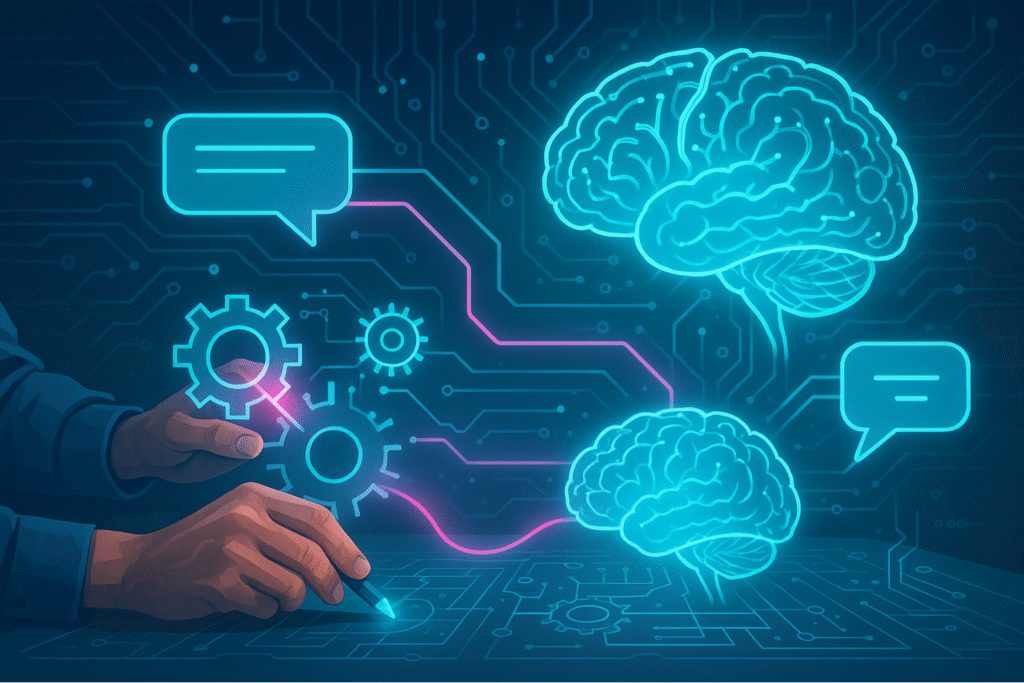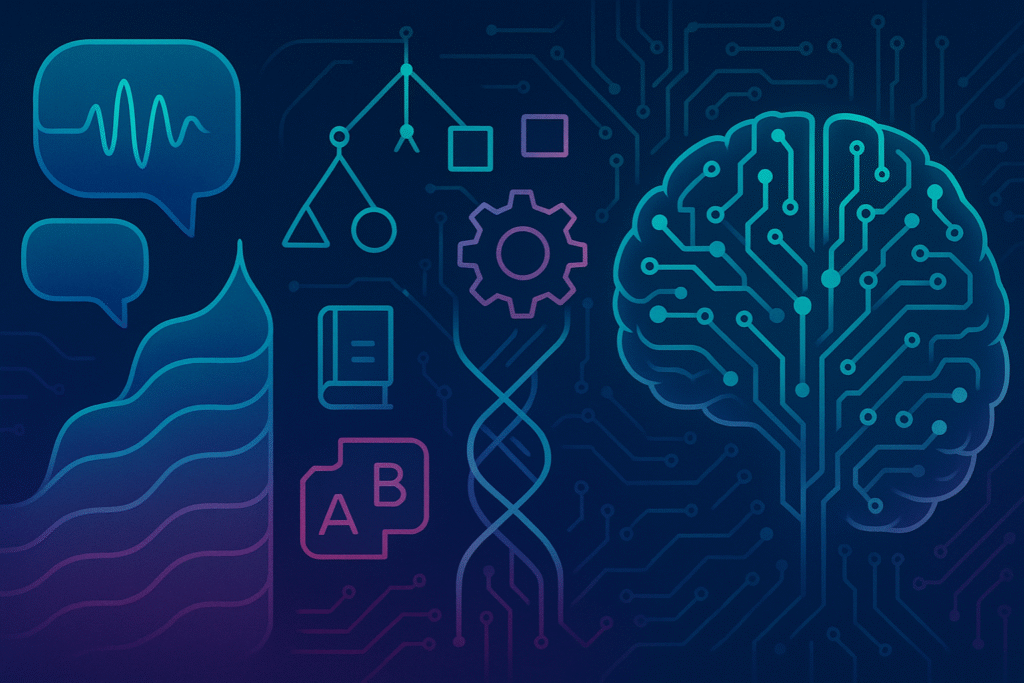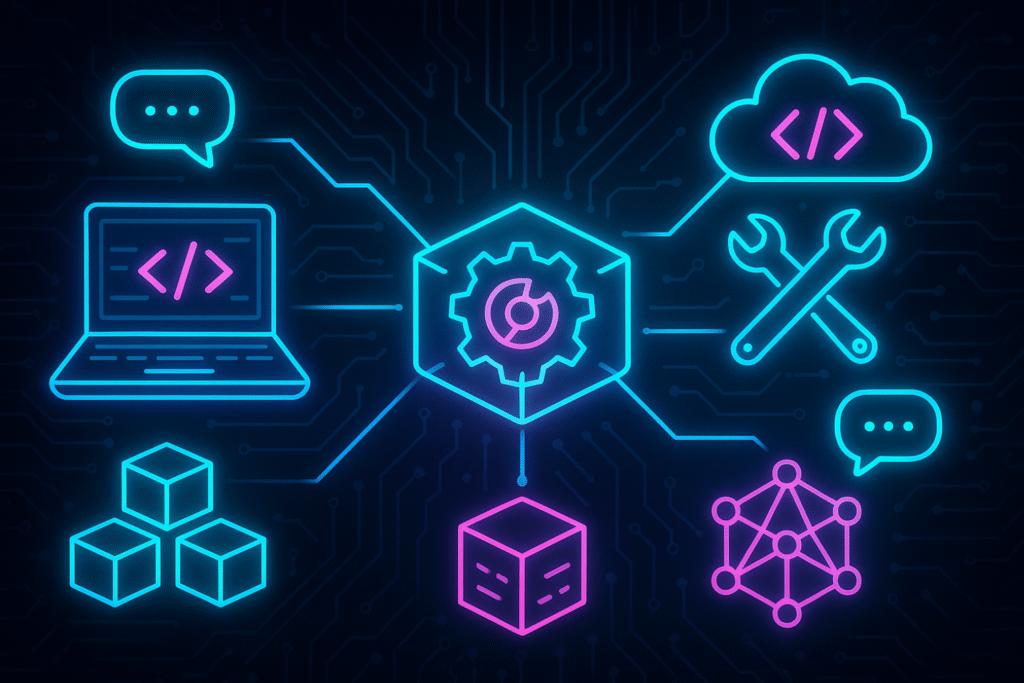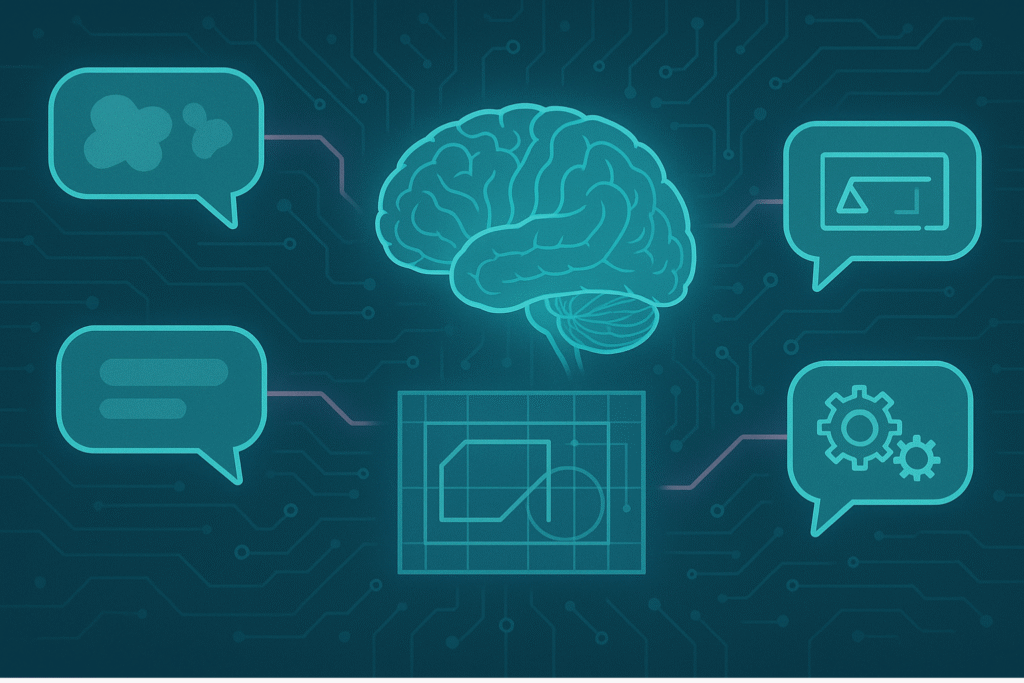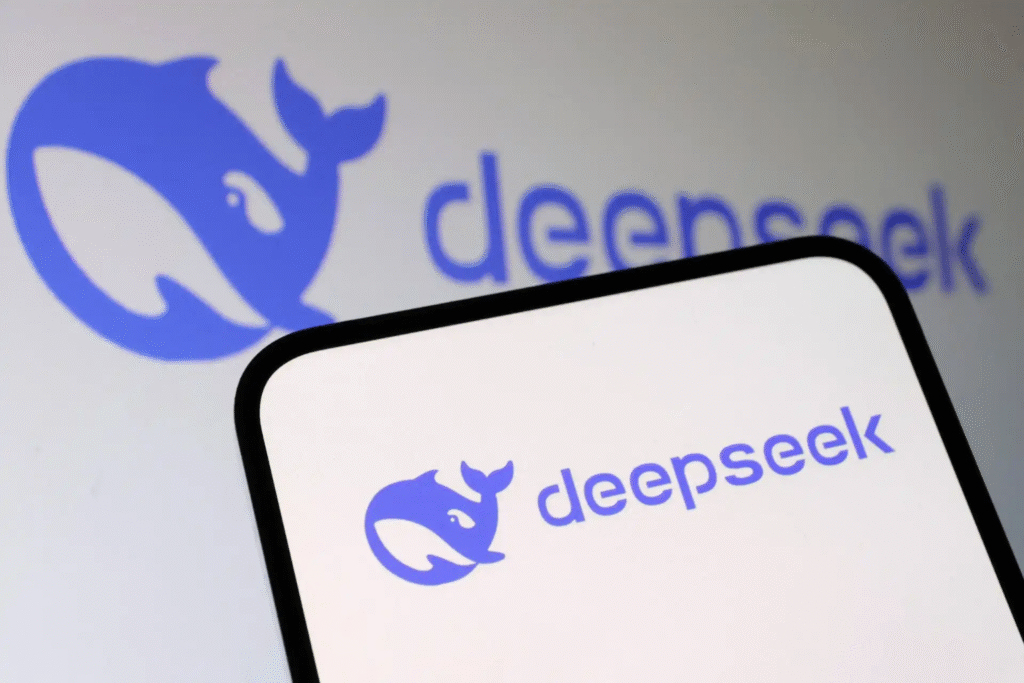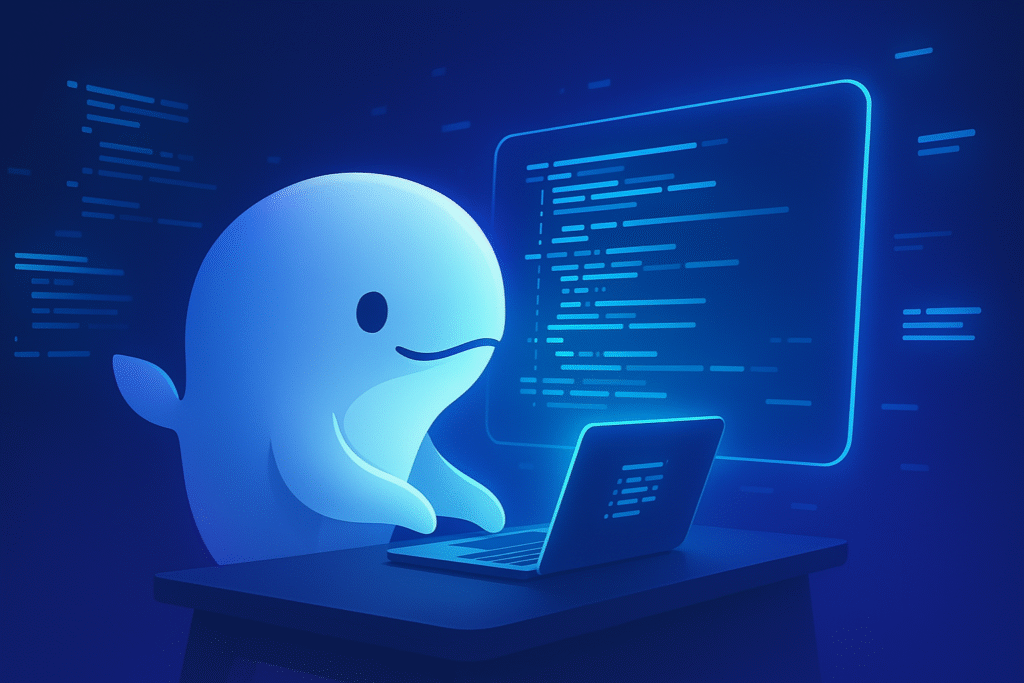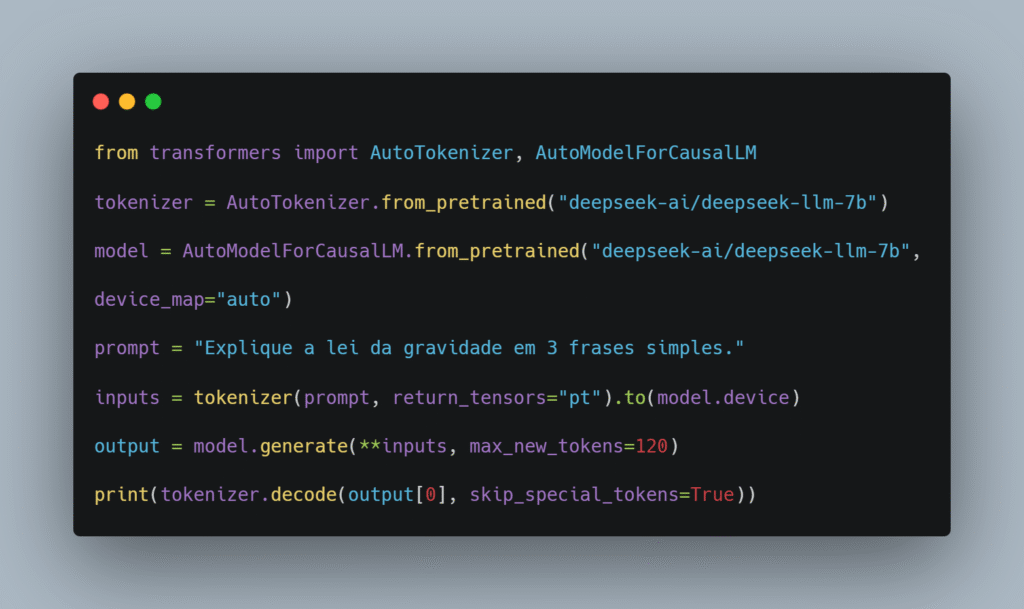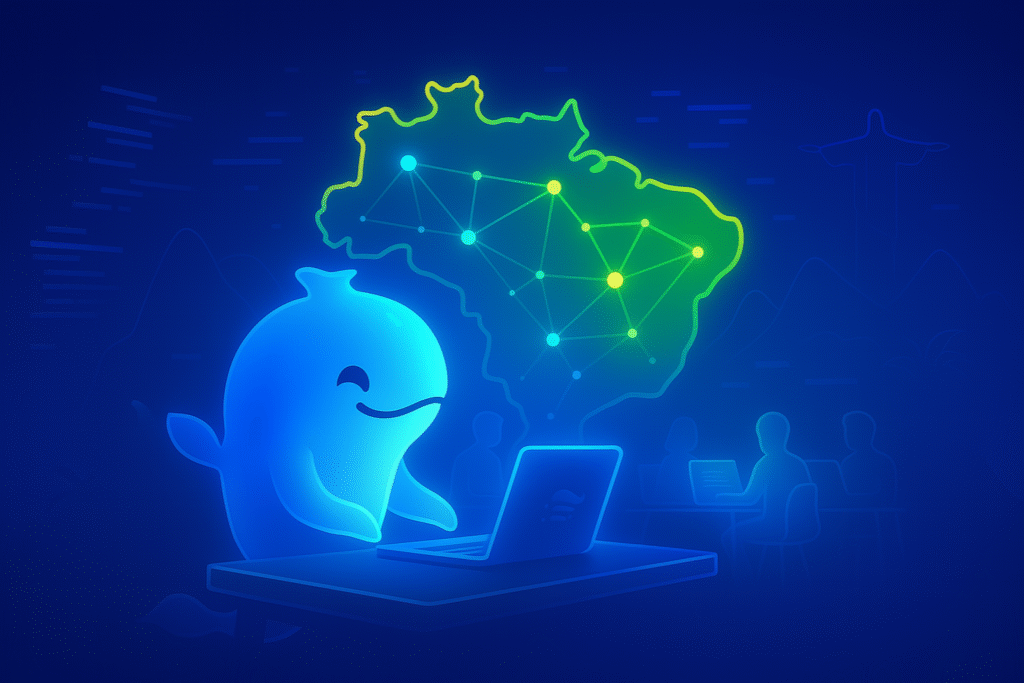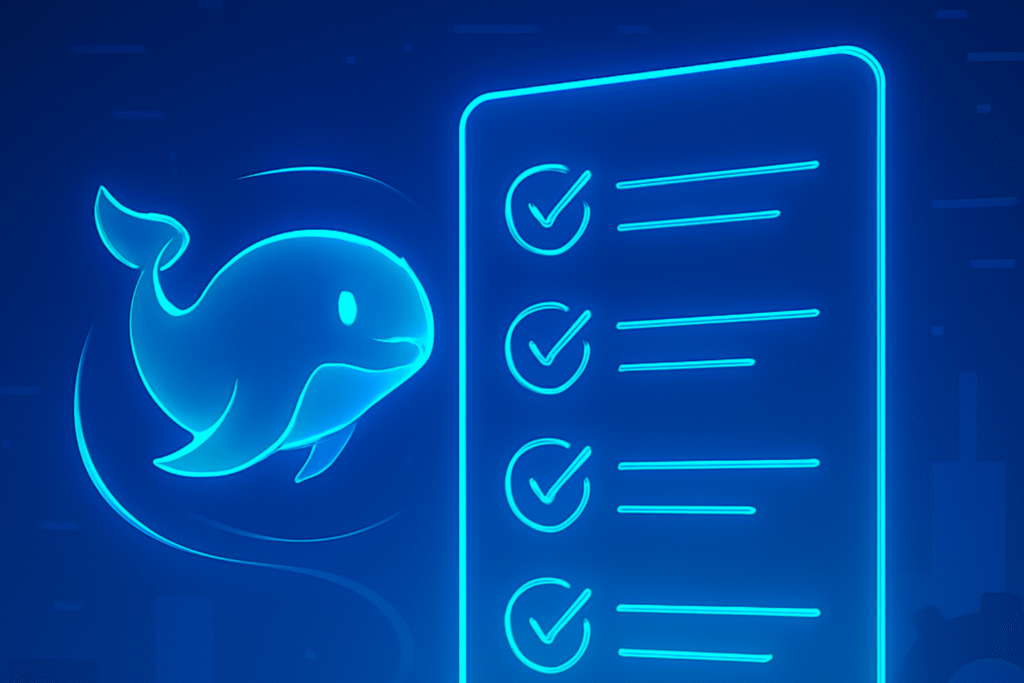Criar imagem com inteligência artificial se tornou uma das formas mais acessíveis, rápidas e criativas de gerar conteúdo visual em 2025. Se antes era preciso dominar ferramentas complexas de design, hoje é possível produzir ilustrações, logos, artes conceituais e imagens promocionais apenas descrevendo o que você deseja ver.
Com o avanço dos modelos de IA generativa e plataformas no-code, esse processo ficou ainda mais acessível para iniciantes, freelancers e empreendedores.
Neste guia completo, você vai entender como funciona a criação de imagens com IA, quais ferramentas estão dominando o mercado, como automatizar a geração visual com integrações inteligentes e, principalmente, como aplicar isso de forma prática no seu negócio ou projeto pessoal.

O que são os geradores de imagem com inteligência artificial?
Geradores de imagem com inteligência artificial são sistemas baseados em redes neurais capazes de criar imagens a partir de descrições em linguagem natural.
Essas descrições, chamadas de prompts, são interpretadas pela IA que, com base em bancos de dados gigantescos e algoritmos de deep learning, compõe imagens coerentes, originais e realistas.
Modelos como DALL·E, Stable Diffusion, and Leonardo.AI já estão sendo utilizados por artistas, desenvolvedores, agências e empresas para acelerar a criação de material visual.
A partir de um texto como “cachorro astronauta em Marte, estilo arte digital futurista”, esses geradores podem produzir em segundos uma imagem que levaria horas em ferramentas tradicionais.
Essa tecnologia faz parte do universo de IA generativa, a mesma família dos modelos de texto como o ChatGPT.
Quando integrada a ferramentas no-code, torna-se um recurso incrível para prototipagem de produtos, criação de identidade visual, branding e conteúdo de marketing.
Vantagens de criar imagem com inteligência artificial
A adoção de geradores de imagem com IA tem crescido não apenas pela inovação envolvida, mas pelas vantagens reais que oferece:
- Velocidade: imagens criadas em segundos, a partir de ideias que você consegue descrever em palavras.
- Acessibilidade: não exige conhecimentos técnicos em design, desenho ou manipulação de imagens.
- Cost reduction: evita a necessidade de contratar designers para tarefas simples.
- Liberdade criativa: possibilidade de explorar estilos artísticos, cenários irreais e concepções visuais impossíveis no mundo real.
- Iteração rápida: você pode testar dezenas de variações visuais com pequenas alterações nos prompts.

Ferramentas para criar imagens com IA (além do Midjourney)
DALL·E (via ChatGPT ou integrações)
Apesar de o Midjourney ser um dos nomes mais conhecidos, há várias outras plataformas potentes e acessíveis. Veja algumas das mais relevantes atualmente:
Desenvolvido pela OpenAI, o DALL·E está integrado diretamente ao ChatGPT, permitindo a geração de imagens por prompt dentro da conversa. Também pode ser usado via automações com o Make ou N8N.
Conheça o Curso de Agentes com OpenAI da No Code Start Up
Leonardo.AI

Com interface acessível e foco em ilustrações e arte digital, é excelente para quem quer criar imagens estilizadas ou com aspecto mais artístico. Ideal para jogos, apps ou projetos criativos. Acesse Leonardo.AI
Bing Image Creator (Microsoft)
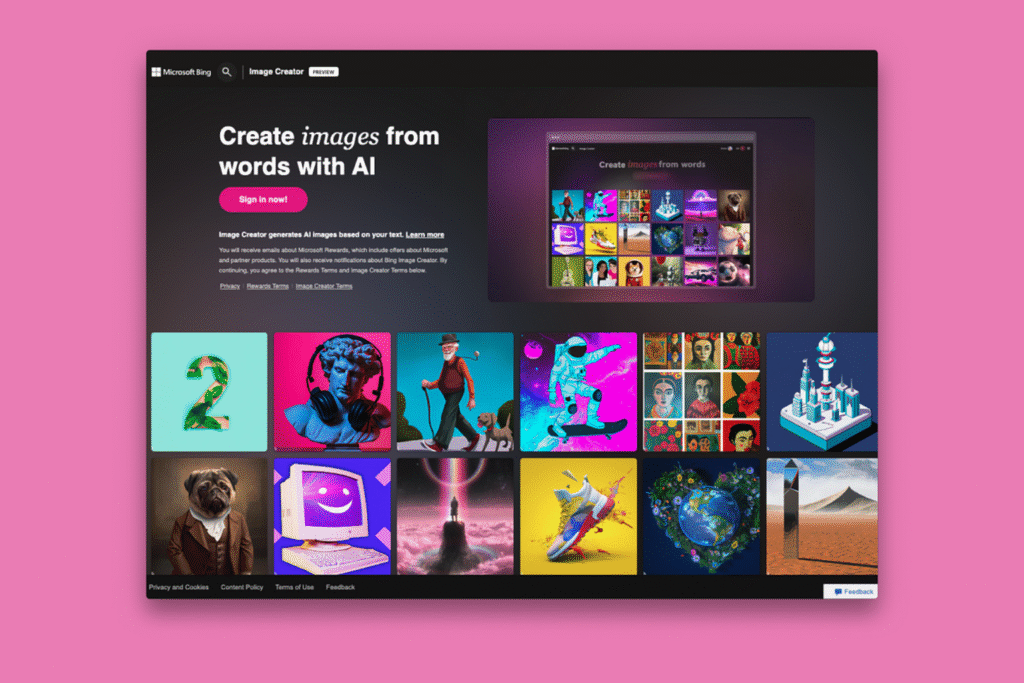
Baseado no DALL·E, oferece acesso gratuito e simples via navegador. É ideal para iniciantes que desejam explorar sem custos. Experimente o Bing Image Creator
Looka
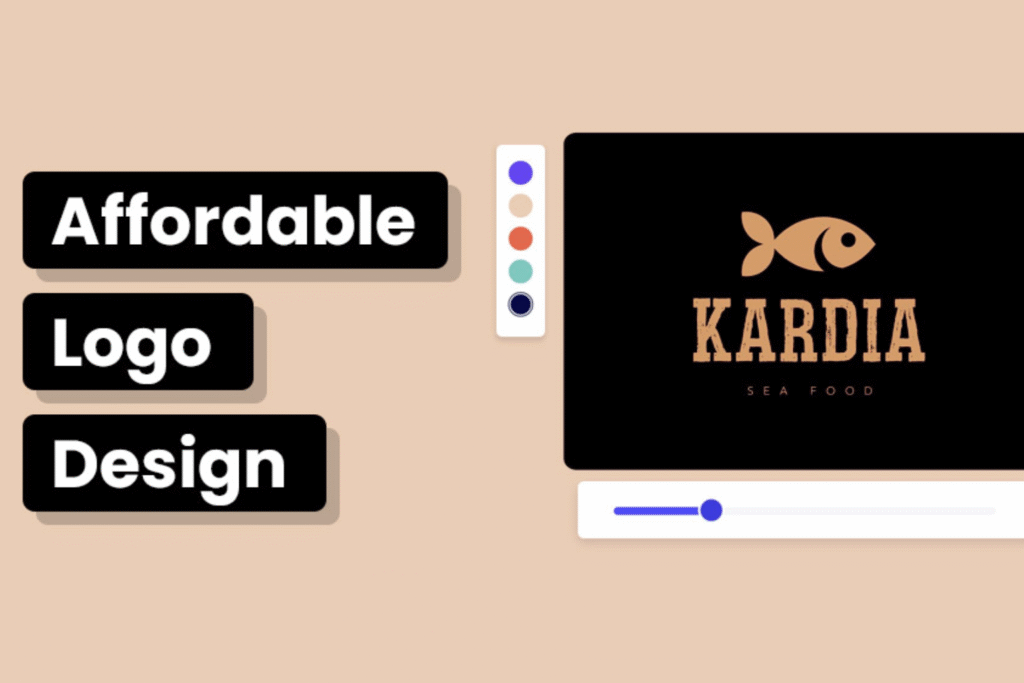
Específico para criação de logos e identidade visual. Muito utilizado por founders que precisam de uma identidade visual rápida para validar ideias. Conheça o Looka
Designs.ai
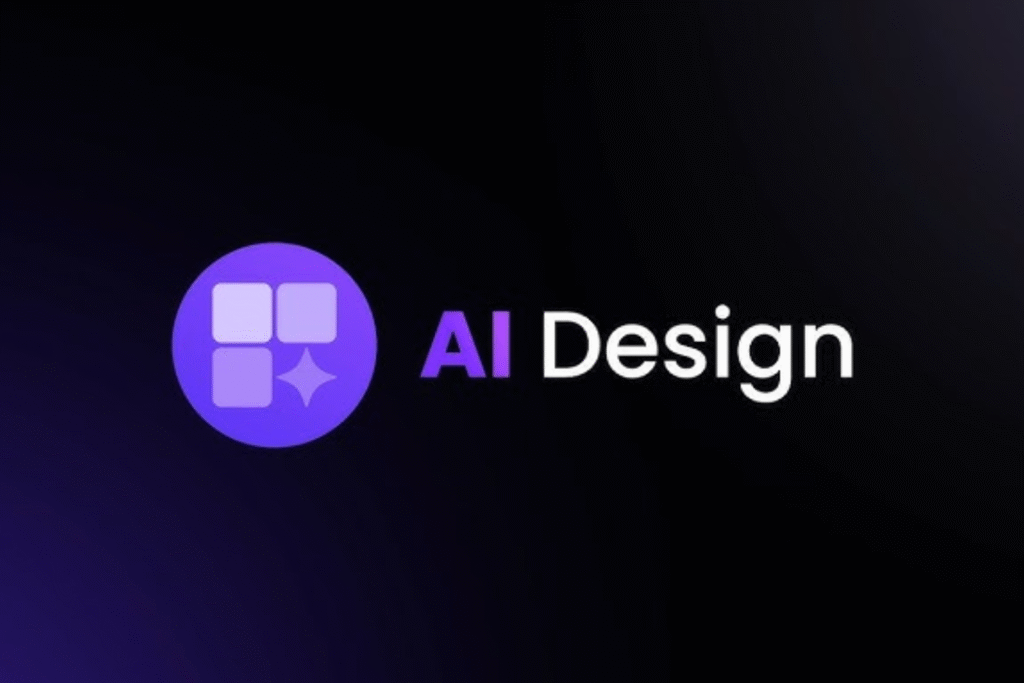
Ferramenta completa de design com recursos de IA para criação de logos, banners e materiais promocionais. Veja mais sobre o Designs.ai
Como automatizar a geração de imagens com IA e no-code
A verdadeira magia acontece quando você integra geradores de imagem com fluxos automatizados. Com ferramentas como make up and N8N, é possível:
- Criar imagens automaticamente com base em respostas de formulários
- Gerar visuais personalizados para cada novo lead captado
- Construir landing pages com imagens dinâmicas usando Bubble or WebWeb
- Alimentar bancos de imagens em apps criados no FlutterFlow
Aprenda como integrar essas automações no Curso Make
Exemplos práticos e aplicações reais
Freelancer criando landing pages completas em 48h
Imagine que você é um freelancer e precisa entregar um site para um cliente em tempo recorde. Usando o Bubble em conjunto com o DALL·E, é possível gerar imagens únicas para cada seção da landing page, adaptadas ao estilo da marca.
Com textos criados via IA, o resultado final é um site coeso, visualmente atrativo e entregue com agilidade.
Empreendedor testando identidade visual de um MVP
Empreendedores que desejam validar seu MVP podem usar o Looka para criar um logo profissional e o Leonardo.AI para gerar imagens conceituais de interface e personas. Isso ajuda a testar hipóteses visuais junto ao público-alvo, sem depender de agências ou profissionais de design.
Iniciante explorando estilos e construindo portfólio
Mesmo quem está começando pode usar o Bing Image Creator para experimentar diferentes estilos artísticos, praticar prompts e montar um portfólio visual para divulgar nas redes sociais ou sites como Behance and Dribbble. Uma ótima porta de entrada para o universo criativo com IA.
Criador de conteúdo automatizando geração de assets
Influenciadores e criadores de conteúdo podem integrar make up + DALL·E para gerar automaticamente capas de vídeo, thumbnails e posts visuais com base em calendários de conteúdo.
Essa automação permite manter a frequência de publicações com visuais consistentes e de alta qualidade, sem esforço manual constante.
Tendências para o futuro da criação visual com IA
A integração entre inteligência artificial e plataformas no-code é apenas o começo. Estão surgindo agentes autônomos que combinam IA de texto, imagem e voz para criar experiências completas.
Tools like Dify and Agents Course with OpenAI mostram como montar esses agentes sem escrever código.
Em breve, será comum vermos marcas criando campanhas inteiras geradas automaticamente: imagens, textos, legendas, e-mails e landing pages. Tudo alinhado a um prompt bem definido e um fluxo de automação eficiente.

Pronto para criar imagem com inteligência artificial no seu projeto?
Criar imagem com inteligência artificial não é mais algo futurista — é uma realidade acessível, produtiva e incrivelmente poderosa para quem deseja acelerar projetos, vender mais ou simplesmente explorar sua criatividade.
Seja você um freelancer ou iniciante, esse é o momento ideal para explorar esse universo. E se quiser aprender na prática, com exemplos guiados, veja os cursos da No Code Start Up:
Explore, combine, experimente. A imagem perfeita está a um prompt de distância.







